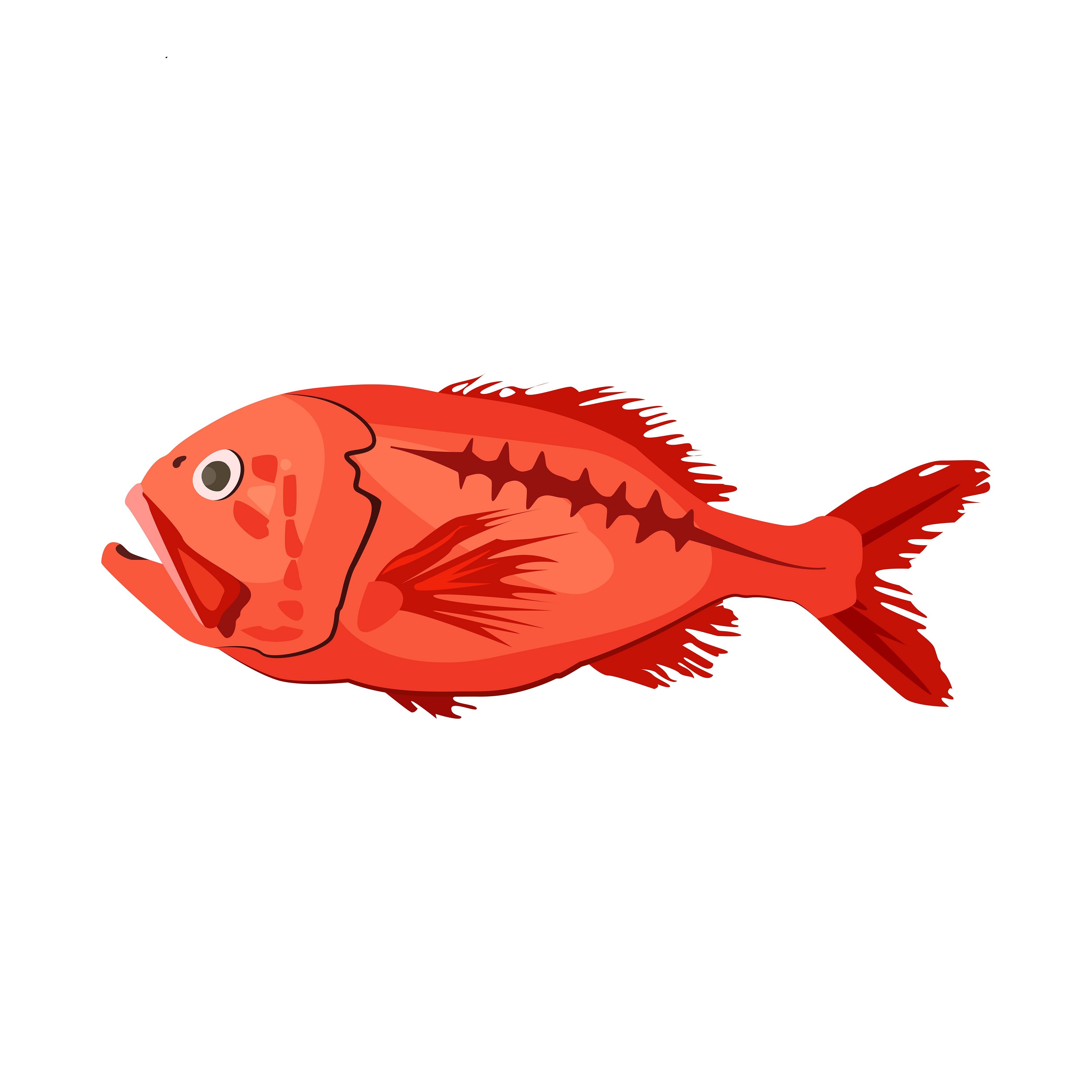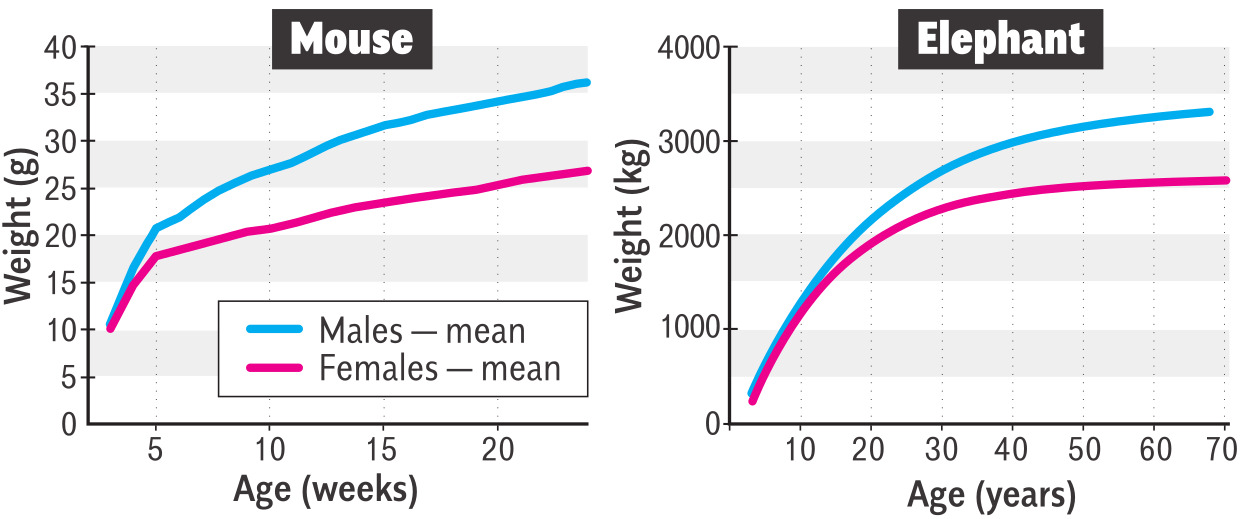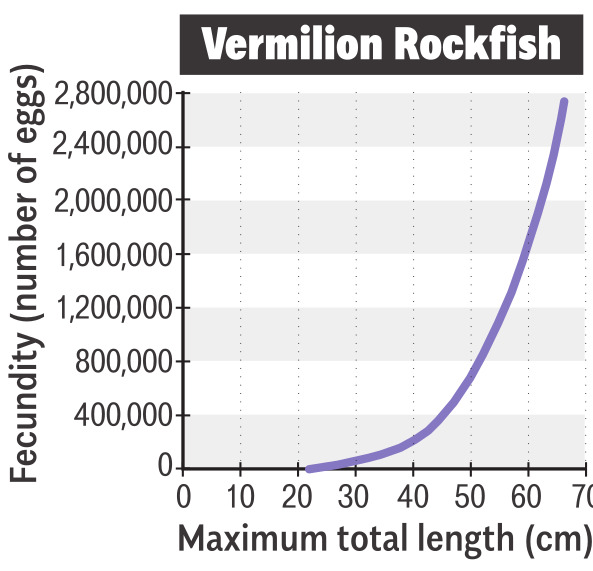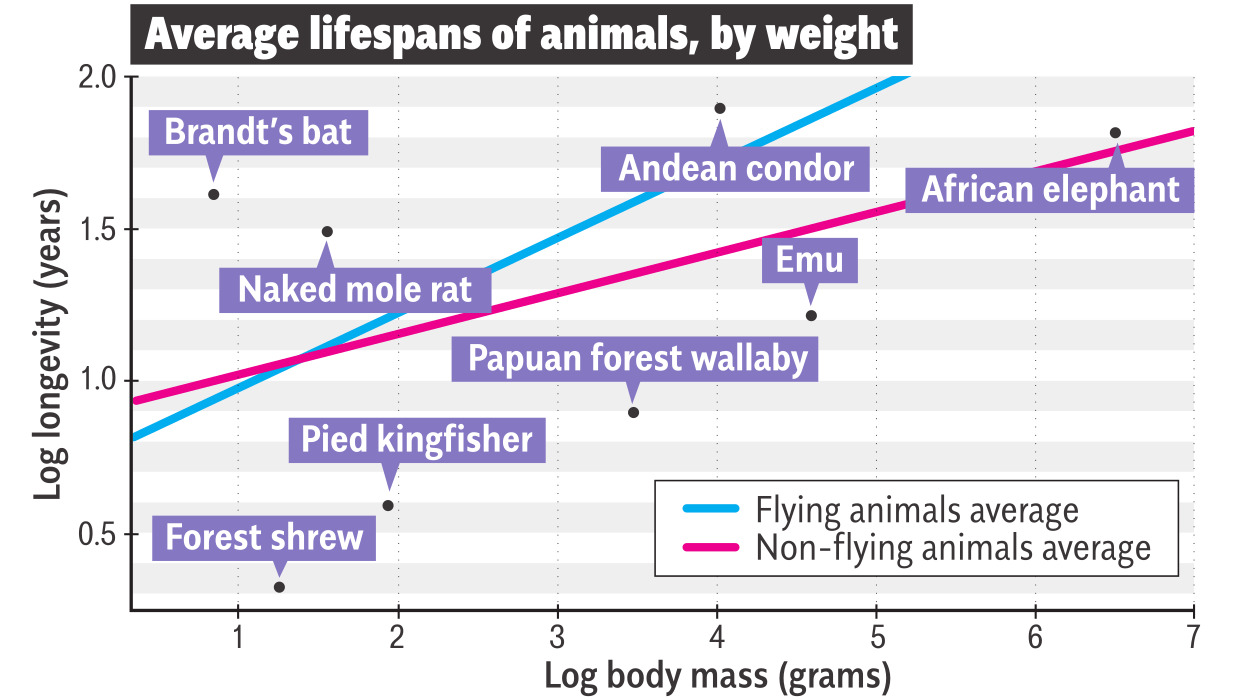
How old is old? And who cares? Fish do.
As humans, we are pretty good at estimating the ages of people we meet. We might not get the exact details correct, but we know how people look as they age through the main stages: from baby to toddler, from child to teen to young adult, and through mature adulthood to old age. We estimate age by using a combination of size, shape, behaviour and surface appearance.

We use size (or height) as a measure mostly among young people. Most mammals, like us, grow fast when young, but then reach a maximum size and then slow right down or even stop. This approach makes perfect sense, because adults can then redeploy the energy used for growth into reproduction. A typical mammal growth curve is steep at the beginning and then flattens in adulthood. Whether it’s a mouse or an elephant or a person, that’s how it goes.
But some animals keep growing till they die. Lobsters, crabs, and shrimp, for example, grow by stages called moulting: struggling out of their too-small shells, inflating themselves with water, and growing a new shell. Young crustaceans moult several times a year. When they get larger, they tend to moult only once a year. Lobsters generally get 15% longer and 40% heavier every time. Since they can live for about 100 years, that means they can grow to be over a metre long, weighing over 20kg. The only reason we don’t see many of that size is that we (or something else) ate them.
So how old is old? The onset of "old age" has been shifting later and later in human populations, as medical science and healthy living do their magic. When you hear that "70 is the new 60," that’s what they mean — but of course it’s been changing all along. All you have to do is read an Agatha Christie mystery from the 1920s to discover that the bent and withered crone next door is actually 43.
Let’s look at natural lifespan, which is the maximum age any member of the species is known to have reached (not in captivity). Humans are the longest-lived terrestrial mammal at 122.5 years; elephants and whales are in the 70-100 range; cats and dogs (and goldfish!) about 30-40; a mouse maxes out at about 6 years. These examples illustrate a well-known theory about lifespans — the larger the creature, the longer it lives. While it’s not perfect, as a general rule of thumb it appears be usually true.
But once again, these guidelines only apply to mammals. It’s in the invertebrate world that things get interesting.

The short-lived lifestyle might be summarised as: live fast, have a zillion babies, die young. Think of mice, exploiting food resources fast. The long-lived approach on land tends to be slower — think elephants, pregnant for 22 months, parenting for over a decade, totalling maybe five offspring. But in the sea, there are creatures who live a long time and produce many babies.
The older a clam or urchin gets, the more likely it is to get older. In contrast, an old human is statistically less likely to see another birthday than a young one. As we age and sustain damage, our bodies are weakened until they can’t go on. Clams, lobsters and some kinds of fish, on the other hand, produce more and more young as they get bigger and older, so it makes sense that they would live a long time.
Long-lived animals that reproduce more the older and bigger they get are not usually the target of predators. A smart wolf doesn’t pick the biggest toughest sheep. However, human fishers are different. Big long-lived organisms are worth a lot in some fish markets, making them especially vulnerable to over-fishing.

On land, it seems that animals tend to be either mice (small, short-lived, lots of babies) or elephants (large, long-lived, few babies). In the sea, we see a much wider variety of approaches. Using land-based farming/hunting strategies and policies to regulate marine aquaculture and fisheries is inappropriate and results in very poor outcomes. The increased difficulty of studying life-cycles, reproductive rates, and even population numbers in the sea causes even worse decision-making.
Our limited perspective has, sadly, resulted in bad management decisions and catastrophic fisheries collapse, especially in long-lived organisms.
I vividly recall going to the fish counter of a supermarket in Chicago (of all places). I expected to see freshwater fish, if any. But that week’s special was on New Zealand orange roughy — advertised as being low in fat and delicious. And indeed it is.
But the orange roughy is also a well-known case study of the importance of knowing how an organism grows and develops when designing management tactics. A deep-water fish that can live for more than 200 years, orange roughy grow and swim slowly; they take over 20 years to mature and reproduce. Given that a scientific experiment is often less than a year, and a scientist’s career maybe 30 years, nobody has actually observed one over its whole lifetime.

Orange roughy occur in large numbers in predictable places (especially near seamounts) around the world. In the 1970s and 1980s, we began to be able to reach their deep dark environments, and, because of missing and inaccurate life-history information, the Aotearoa New Zealand population was over-fished to collapse.
Additional information, limits on catches, and subsequent changes to how we catch these fish are designed to allow the populations to recover. It was scientific research into their lifespan, reproductive strategies, and migration habits that helped us to design a better regime. And it will be scientific studies that determine whether the approach has been successful or not. In the meantime, at least three of New Zealand’s orange roughy fisheries continue.
According to Ministry for Primary Industries figures, in 2023 commercial catches of orange roughy amounted to more than 8 million kg; the export value is about $300 million per year. We may not know enough about this animal’s life span or how many there are in the sea, but we sure are killing and eating a lot of them.
The danger is assuming that all organisms are like mammals, particularly the notion that the older individuals are no longer reproductive, so can be safely culled. It’s just not so, and part of our species’ unenviable record of causing other species to become extinct is because we haven’t really learned what we need to know before we start harvesting.

The common English phrase "there’s plenty more fish in the sea" won’t be true before long — there are estimates of 2.7 trillion fish removed from the ocean each year. Over 90% of fish species are over-exploited according to the UN. Meanwhile, our lack of understanding and land-based perspective results in fishing targets based on limited or almost no information, incautiously applied, with disastrous results.
The oldest orange roughy in the ocean were born before European settlements were built in Aotearoa New Zealand; when George IV was King of Britain, James Monroe was the fifth US President, and Beethoven was composing his 9th Symphony.
Orange roughy alive today remember a time when the sea was full of fish, when giant crayfish and crabs scuttled along the bottom, when enormous clams sent out huge plumes of eggs. A time when the nets and trawls and hooks never came. A time when the sea was theirs, not ours.
Abby Smith is a professor of marine science at the University of Otago.











